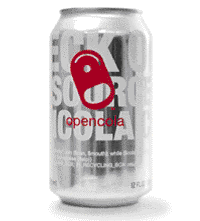From OpenCola to Bin Laden

I just stumbled upon a Wikipedia lemma on opencola. The recipy contains a fair amount of Gum Arabic. That reminded me of a book by Dorrit van Dalen that recently appeared at Bert Bakker publishers that is high on my wishlist. What is below I read in review.
Apperantly Gum Arabic is one of those substances that is imposible to synthesize and that can only be retrieved from damaged barks of certain spiecies of the Accasia tree. In dutch the phenomena is called “Tranen der Accasias” (Accassia tears) which happens to be the title of one of the first novels by Willem Frederik Hermans. The circumstances under which the gum is produced is hardly known so that the production is hardly cultivated.
The name Gum Arabic stems from the fact that the Accasia species can only be found in the subsahara regions. If I recall well the main production used to be in West Africa but has moved to East African Sudan. Traditionally the traders in Gum Arabic are powerful men. It is one of the markets that has always been dominated by the traders. The first major buyers of the product were textile printers and they had no choice than to deal with the traders. Those traders needed to protect the sources for their product and therefore these became a pretty secretive bunch.
The book argues that the Bin Laden familly (Osama in particular) has a large stake as one of the Sudanese gum traders. Sudanese gum was one of the products that was kept out of economic embargos because it is one of the main substances for Coca Cola (and other food and drink). Wikipedia dismisses this as an urban legend. Which makes me want to read the book even more.
Also see the Wikipedia Gum Arabic lemma, that is also where I found the explanation why arabic gum is used in cola: Gum arabic reduces the surface tension of liquids, which leads to increased fizzing in carbonated beverages.
Leave a Reply